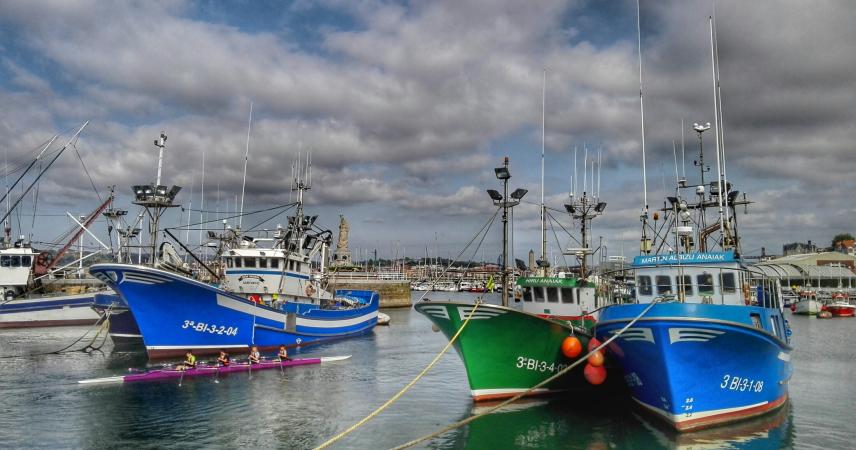The construction of the breakwater and the beginning of work on the outer port towards the end of the 19th century had a major influence on the transformation of Santurtzi. Thus, certain areas along the coastal strip gradually disappeared and the land that was reclaimed from the sea is now the site of the Fishermen’s Guild, the Fishing Port, the Park, the Sports Centre and the Reina Victoria Seaside Promenade.
The Fishermen’s Port and Guild, albeit with a fewer number of boats, retain the typical appearance of times past.
Whenever conditions permit them to venture out to sea, local fishermen unload fresh fish here every day which is sold directly at the harbourside market.
The fish market was refurbished in 2011. Along with the market per se, the building is home to the Hogar del Pescador restaurant, which serves traditional fare, the tourist information office and the auction room, where dramatisations of fish auctions are staged regularly.
The building also houses the Santurtzi Itsasoa Museoa interpretation centre. This museum is open every day, and shows a comprehensive picture of the maritime history of the town. It is a unique venue that provides an overview of the development and transformation of the El Abra bay as a maritime centre and the inlet to the Ibaizabal-Nervión tidal river estuary, the main gateway to Bilbao by water.
On the dock there is a mosaic by local artist Jon Mao. It depicts oarsmen and net-menders, two groups who have played a significant part in the history of Santurtzi.
Another feature of the breakwater at the fishing port is a manually-powered crane built in 1919: a fine testimony to our all-too-often-neglected industrial heritage. The "Monument to the Basque refugee children" stands nearby. It is explained below.
